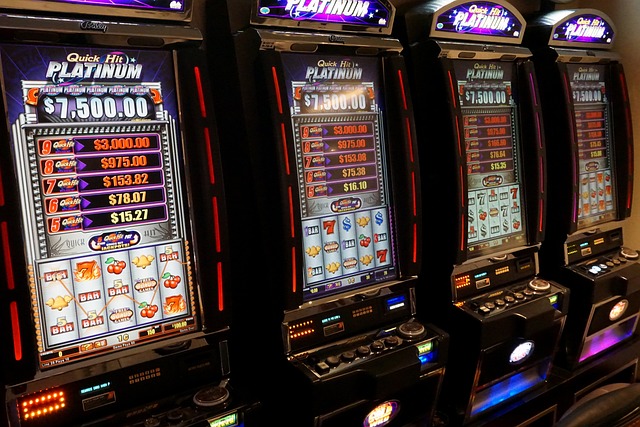Slot machines may appear random on the surface, but experienced players know that not all slots are created equal. Some machines are known to pay out more frequently and generously—these are called loose slots. Others rarely hit or pay small amounts when they do—these are tight slots. While modern slots use RNG (Random Number Generator) technology, clues still exist that can help players spot machines with better payout behavior. Understanding these patterns can help you play smarter and potentially stretch your bankroll further.
What Are Loose and Tight Slots?
The terms “loose” and “tight” refer to the payout frequency and return-to-player (RTP) rate of a slot machine.
- Loose Slot: A machine with a high RTP and frequent payouts. It gives players more frequent wins, although sometimes smaller in value.
- Tight Slot: A machine with a lower RTP and fewer wins. It holds onto players’ money longer with fewer returns.
This doesn’t mean one machine is rigged or unfair—it’s all about programmed volatility and payout structure.
Look at the RTP and Volatility
A key step in identifying a loose or tight machine is checking its RTP (Return to Player) and volatility:
- RTP: Expressed as a percentage, RTP indicates how much a game pays out over time. For example, a slot with 96% RTP will theoretically pay back $96 for every $100 wagered. Loose slots usually have RTPs of 96.5% or higher.
- Volatility: This measures how often and how much a slot pays out. High-volatility games (often tight) give big but rare wins, while low-volatility games (often loose) offer smaller but more frequent payouts.
These numbers are often available on the game’s info screen or on the casino’s website. Prioritize machines with higher RTPs and medium volatility for more balanced play.
Observe Payout Patterns

In physical casinos or online, you can often watch how a slot behaves:
- Are wins happening regularly, even if small?
- Do bonus rounds appear within 20–40 spins?
- Are other players moving away quickly or sticking around?
A machine that delivers steady wins and bonus activity may indicate looser settings. On the other hand, if you burn through multiple sessions without triggering a feature, you might be on a tighter machine.
Keep in mind, RNG technology ensures randomness, so these patterns are more about general trends than guaranteed results.
Try Demo Mode or Minimum Bets First
One smart way to spot a tight or loose slot—especially online—is to test it in demo mode or with low-stake bets:
- Play 50–100 spins
- Track how often you hit wins, free spins, or bonus rounds
- Note how much return you’re getting for your input
If you’re seeing consistent dry spells, consider moving on. A demo run gives you insight into the slot’s payout rhythm without risking your real bankroll.
Research Player Reviews and Forums
Online communities often share insights about which games are behaving loosely or tightly. Check:
- Casino player forums
- YouTube slot streamers
- Reddit threads (e.g., r/slots or r/gambling)
- Review platforms like AskGamblers or SlotsJudge
Players often post their win ratios and bonus frequencies, especially for new or trending slots. While RNG makes each session unique, consistent patterns reported by multiple users can signal which games are worth trying.
Game Age and Popularity
Newer slot releases often come with slightly adjusted RTP or promotional configurations that are more favorable to encourage initial play. Developers may launch games with enhanced win rates during the first few weeks.
Additionally, older games with high traffic are more likely to offer better odds to maintain interest. Casinos often set these machines looser to attract players who recognize their long-standing popularity.
Look at the Paytable and Mechanics
Another method is examining the paytable and special features. Loose slots often include:
- Frequent wilds and multipliers
- Expanding symbols or respin bonuses
- Low symbol count, which increases win frequency
- Lower jackpot ceiling, meaning it pays more often
Tight slots, meanwhile, often rely heavily on high-risk bonus features that rarely trigger. If the slot promises huge max wins (e.g., 10,000x) but little action in base game, it likely leans toward being tight.
Casino Placement May Still Matter (in Land-Based Casinos)

In traditional casinos, machine placement used to be a clue—loose slots were sometimes placed at the end of aisles or near high-traffic areas to attract attention. While modern programming has reduced this tactic, some casinos still use placement strategy.
Machines near:
- Entrances
- Cash-out areas
- Cafés or waiting zones
…might have higher RTP settings to keep traffic flowing and customers engaged.
Use Slot Trackers and Stats Tools
Some online casinos and third-party apps now offer slot tracking tools that gather return data across hundreds of user sessions. These platforms use anonymous player statistics to estimate which slots are paying more often.
Examples include:
- SlotCatalog RTP trackers
- Casino streamers’ live return stats
- Crypto casino public ledger data (where wins and losses are logged)
These tools aren’t foolproof, but they offer real-world data that can guide your slot choice based on performance, not just appearance.
Final Thoughts
Spotting a tight or loose slot machine isn’t an exact science, but a combination of RTP knowledge, gameplay observation, and community feedback can help you make smarter choices. By identifying which slots offer better payout potential, you improve your chances of walking away with more playtime and, hopefully, more winnings.
In 2025, with advanced slot mechanics and deeper player analytics available, the smart gambler isn’t just spinning—they’re choosing wisely.
